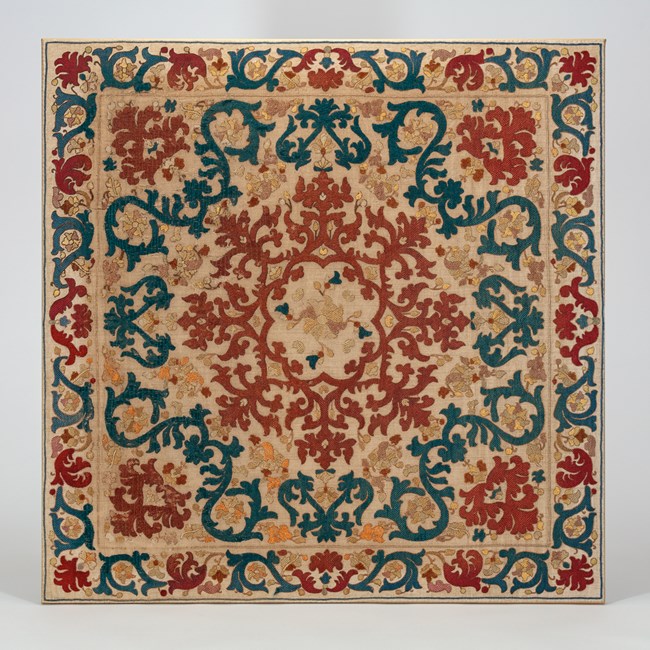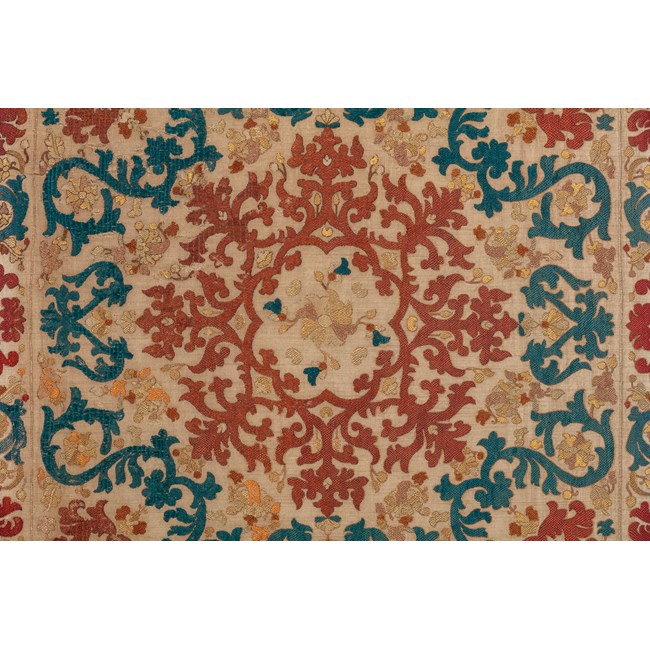
Ottoman Algerian Textile Panel
Ottoman Algerian Textile Panel
18th Century
Linen with silk thread
82.5 cm square
Stock No.: A5349
Ottoman Algerian Textile Panel
A square linen panel embroidered with blue, red, pink, yellow and white silks, this piece of textile has patterns in the central field contained within a border on all four sides. The centralised composition starts with an eight-petal flower in the centre, surrounded by highly stylised vegetal patterns in red, blue and gold. Similarly, the border on four sides is embroidered with flower and leaf abstraction of the same red and blue colours.
The motifs displayed on the textile strongly suggests its origin as Algeria, as seen from several comparative materials from the Victorian and Albert Museum (1029-1855) and the Metropolitan Museum of Art (91.1.89; 26.34.52). The long, couched stiches is an embroidery technique typically see on textiles from the Ottoman empire. The square shape and size of this fabric indicates that it was likely to have been used as a wrapper (“bohça”), a functional accessory originally used for wrapping bedding, surplus clothing, tools and equipment in Turkic households. As society evolved with the creation of a property-owning middle class, the function of traditional covers such as bohça, changed – they became a symbolic formal wrapping for gifts, as there was no longer the same need for them in the house.
The Regency of Algiers (1516-1830) was a state in North Africa under the Ottoman occupation. Like many other regions of the Ottoman empire, Algerian embroidery took on patterns from Istanbul during the occupation period. However, the use of colours on Algerian textiles remained distinct from those made in the Ottoman heartland. The red and blue colours of our textile is characteristic of Algerian textiles – a wrapper of similar colour scheme from Algeria can be found in The Walters Art Museum, Baltimore (83.178), as well as a panel from the Metropolitan Museum of Art (28.109.3).
Reference:
Taylor, Roderick, and Antony Maitland. Ottoman Embroidery. London: Studio Vista, 1993.
@AMIRMOHTASHEMI






 instagram
instagram
